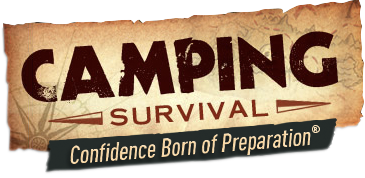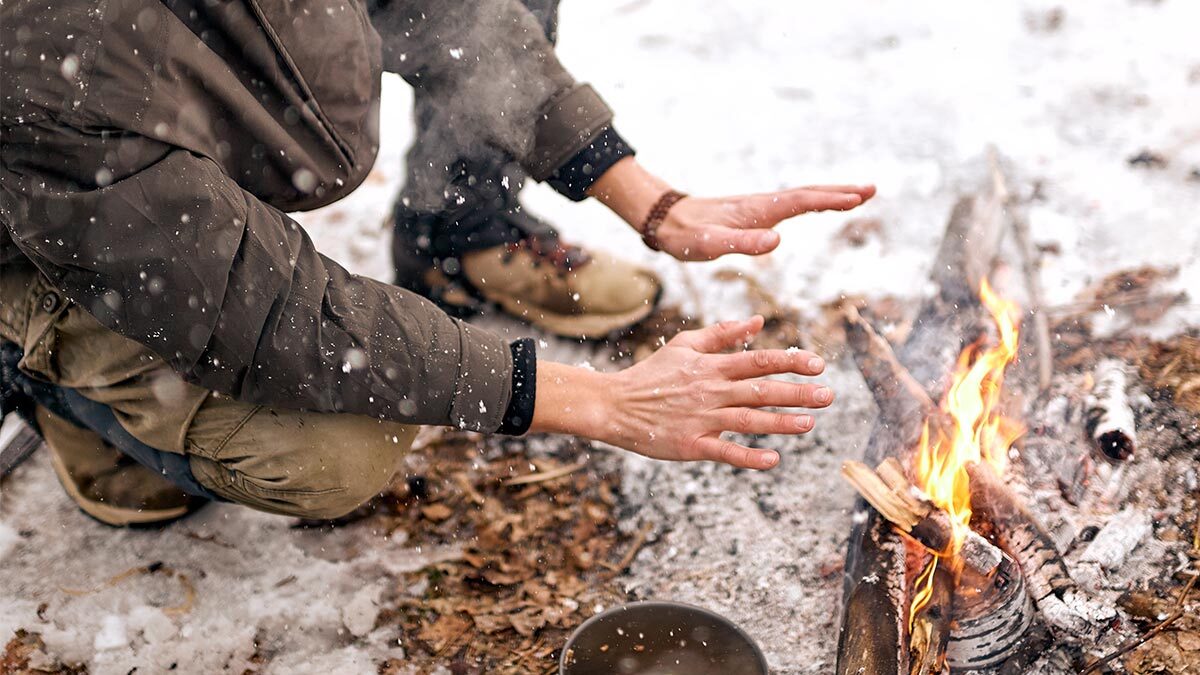When it comes to survival, there are several key components. You need food, water, and shelter. In the outdoors, however, learning how to make fire is another must for survival.
Fire gives you warmth and light, but it also helps you with your food and water needs. If you are stranded in the wild or your home water has been compromised, having fire allows you to boil water to make it safe to drink. If you have no food but are able to catch animals or bugs, they will need to be cooked.
Always having matches or a lighter on hand will make starting a fire much easier, and we encourage you to have multiple methods of fire-making on hand while hiking or camping, in your bug-out bag, and at home. However, in the case that you do not have access to those, you need to know how to start a fire without them.
Knowing how to start a fire with what you can find in nature or your surroundings could be the difference between life and death. Here are the top 10 easiest ways to start a fire without matches or a lighter.
1. Steel Wool and Battery
Using a 9-volt battery and fine-grade steel wool is one of the easiest and most effective ways to start a fire without matches or a lighter. The likelihood you will find these items in the wild is not high, but it is very likely that you have these items in your home.
Simply touch the terminals of the battery to the steel wool, and it will heat up and ignite. Make sure you have dry kindling ready to add to the flames.

2. Magnifying Glass
A magnifying glass can be used to focus the sun's rays onto a pile of dry kindling to ignite a fire. This may seem like a TV gimmick, but it does actually work.
Hold the magnifying glass a few inches away from the kindling and angle it so that the sun's rays pass through the lens and onto the kindling. This method can take some time as it requires a steady hand and a clear day. If you are patient and persistent, however, it can work.
[Related Read: Backbone of Survival - The 10 C’s]
3. Flint and Steel
Flint and steel is a traditional method of starting a fire that has been used for centuries. There are a variety of flint and steel kits that you can purchase or you can put together your own.
To start, you strike a piece of flint against a piece of steel to generate sparks which is then directed onto a pile of dry kindling. This method takes a bit of practice to master, so don’t give up. Once you get the hang of it, it is an effective way to start a fire without matches or a lighter.
4. Char Cloth and Flint
Char cloth is a highly flammable cotton fabric that has been charred in the absence of oxygen. This usually combines with a flint and steel kit to make lighting the fire even easier. You can buy char cloth or make your own.
Place a small piece of char cloth onto a piece of flint and strike the flint with a steel striker to generate sparks. Once the char cloth ignites, transfer it to a pile of dry kindling to start your fire.
5. Fire Piston
A fire piston (also known as a fire syringe or slam rod fire starter) is a small cylinder that compresses air to create heat, which can ignite kindling. This is an ancient tool that was invented in Southeast Asia 100-500 AD.
To use, simply insert a small amount of tinder (char cloth can also be used here) into the piston, and rapidly compress the air inside by pushing down on the plunger. The heat generated by the compression will cause the tinder to ignite.

6. Bow Drill
A bow drill is a traditional method of starting a fire that involves using an arched bow to rotate a spindle against a piece of wood (also known as the “hearth board”).
The bow is attached to the spindle with a string. A shoelace could do the trick if long enough, as well as the roots and bark of certain trees, reverse-wrapped plant fibers, and long strips of clothing that have either been braided or reversed-wrapped.
Make a notch in the middle of your hearth board. Place a small pile of kindling over this notch, and then place the spindle in the middle of that pile on the notch. Find something to hold the spindle in place (like a fist-sized rock) while moving the bow back and forth in a sawing motion to rotate the spindle against the piece of wood.
This creates enough heat to ignite your pile of dry kindling. This method does require practice and patience but is not as tiresome as some other friction methods of fire making.
7. Fire Plow
The fire plow method is a primitive but effective way of starting a fire in the wilderness and is the most simple friction method of fire making.
To begin, all you need is a straight piece of hardwood, around two feet long and a few inches thick. Find a flat, softer piece of wood to use as the baseboard. Use a knife to carve a groove down the center of the baseboard, about an inch wide and half an inch deep.
Next, take the hardwood rod and shape one end to a point. Place the pointed end into the groove and start rubbing it back and forth with your hands, generating friction between the two pieces of wood. Continue rubbing vigorously until you see smoke start to rise from the groove.
Once you have created enough heat, you will see a small ember forming in the groove. Blow gently on it to encourage it to grow into a flame. Quickly transfer the ember to a small bundle of dry grass or other kindling and gently blow on it until the flame catches hold.
This method requires a lot of patience, focus, and energy. It may take several minutes or even hours to create an ember, depending on the condition of the wood, the humidity in the air, and your level of experience. However, with persistence and determination, you can successfully use the fire plow method to start a fire with nothing but nature around you.
[Related Read: 5 Critical Survival Skills You Need to Master]

8. Ice Lens
Create a lens by shaping a piece of ice or snow, and use it to focus the sun's rays onto a pile of dry kindling. Be sure to have patience, as this method requires clear weather and steady hands.
The ice lens method is a fascinating technique that can be used to start a fire in freezing conditions. It is a similar technique to the magnifying glass, but only requires what you find in nature.
Start with a clear piece of ice, preferably with a diameter of at least three inches. Shape the ice into a lens using your body heat or a heat source like a lighter.
Hold the ice lens over your tinder, focusing the sunlight onto a small point on the tinder. Move the ice lens back and forth until the focal point is hot enough to ignite the tinder. It's important to ensure that the lens stays dry throughout the process, as water droplets can disrupt the path of the sun's rays.
This method can be a lifesaver in harsh winter conditions when dry wood is hard to come by.
9. Chemical Reaction
Chemical reactions can be a useful tool for starting a fire in situations where traditional fire-starting methods are not available or practical. One common example is the use of potassium permanganate and glycerin.
To start a fire using this method, you will need to mix a small amount of potassium permanganate and glycerin on a surface or in a container. The reaction between these two chemicals generates heat and sparks, which can ignite nearby tinder. It's important to note that this reaction can be quite violent, so it's essential to exercise caution and wear protective gear like gloves and safety glasses.
10. Hand Drill
This method is similar to the Bow Drill but instead of using a bow, you use your hands to turn the spindle.
It requires two pieces of wood: a spindle and a fireboard. Create a notch in the fireboard and place it on the ground. Next, take the spindle and insert it into the notch. Rotate the spindle rapidly between your palms, causing friction between the spindle and the fireboard.
The friction will create heat and generate smoke, which will eventually lead to a glowing ember in the notch of the fireboard. Carefully transfer the ember to a nest of dry tinder and blow on it gently to help it catch fire. Gradually add more kindling and fuel until you have a strong and steady flame.
This method also requires strength, patience, and practice but can be an effective way to start a fire.
Knowing how to start a fire without matches or a lighter is an essential survival skill. The methods described above are all relatively simple and require minimal equipment, making them a great place to start for anyone interested in learning this life-saving skill.


3 comments
I love this,
I knew about some of those things, but you up dated my brain, thanks. Will pass it on to my grandson.
You forgot using a bottle of water to start a fire. The water magnifies the sun!